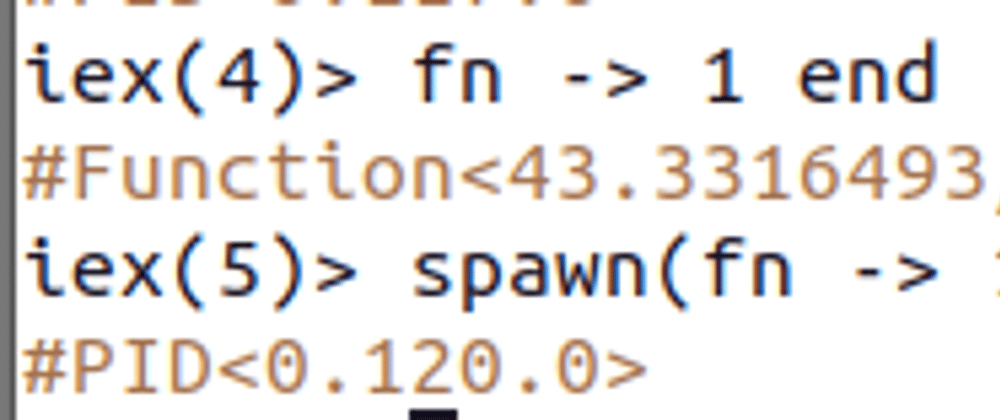To learn what a process is in Elixir, you must first know what a function is.
For example, IO.puts/1 is a function that writes something to the screen. The function is called puts, it is in the IO module (input I and output O), and it takes one argument:
iex(1)> IO.puts("Adolfo")
Adolfo
:ok
If all goes well, it returns the :ok atom .
One function that lets you spawn a process is Kernel.spawn/1.
Again, the name is spawn. It's part of the Kernel module and takes one argument.
Can I do
Kernel.spawn(IO.puts("Adolfo"))
?
No!
Let's start simple: every function that is part of the Kernel module doesn't need the module name before it.
You just call
elixir`
spawn(IO.puts("Adolfo"))
It will still be wrong, but with fewer letters.
What Kernel.spawn/1` gets is an arity 0 function, i.e., one that takes no arguments.
How do we do that?
Like this:
fn -> 1 end
The above function has no name (anonymous) and returns 1.
But see in the image that if you spawn it, nothing interesting happens:
First, see that
fn -> 1 end
returned some sort of "code" that identifies the function:
#Function<43.3316493/0 in :erl_eval.expr/6>
and
spawn(fn -> 1 end)
returned a PID, a Process IDentifier:
#PID<0.120.0>
I can assign this PID to a variable:
iex(1)> pid = spawn(fn -> 1 end)
#PID<0.110.0>
And then ask if the process that was spawned is alive:
iex(2)> Process.alive?(pid)
false
It is not alive because it was a very fast function, which only returned 1.
I can, for example, make the process "sleep" for 10 seconds before returning 1.
iex(3)> pid = spawn(fn -> Process.sleep(10000); 1 end)
#PID<0.113.0>
If I quickly ask if the process, whose identifier is in the pid variable, is alive, the answer is yes.
iex(4)> Process.alive?(pid)
true
But if I ask again after 10 seconds, the answer is no.
iex(5)> Process.alive?(pid)
false
If I do this here
iex(6)> pid = spawn(fn -> Process.sleep(10000); IO.puts("Adolfo") end)
#PID<0.117.0>
Adolfo
it will take 10 seconds for "Adolfo" to be written to the screen.
Whereas if I do the following, it will be immediate for "Adolfo" to appear on the screen.
iex(7)> pid = spawn(fn -> IO.puts("Adolfo") end)
Adolfo
#PID<0.119.0>
Anyway, this is just the basics of the basics. Read more at
https://elixirschool.com/pt/lessons/intermediate/concurrency
Or in the Getting Started of the Elixir language
https://elixir-lang.org/getting-started/processes.html
I did all this without even mentioning send and receive.
Finally: a process in Elixir is a processing unit that performs a function.




















